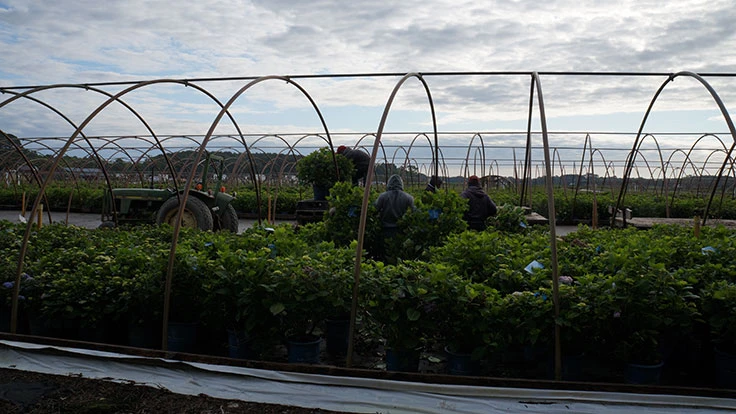
At Cultivate'17, Craig Regelbrugge, senior vice president of industry advocacy and research with AmericanHort, spoke with a full room of growers and landscapers for whom labor is the no. 1 concern.
First, he dazzled the audience with statistics. For instance, 72 percent of agricultural workers are foreign-born. At least half of those workers are unauthorized. Regelbrugge said these “creatively documented” workers have papers and the employers are diligently filling out I-9 forms for them, but in many cases the papers aren’t as good as they look and would not hold up to forensic scrutiny.
Perhaps that’s not a surprise, but the average age of these workers is 40 -- which is much higher than it used to be. The “young people” handling the physical labor of growing plants are getting older. The average employee has 14 years experience in the field, and seven with the same employer. There are several reasons for this, from increased border security and deportation concerns to continuing trend of lower birth rates in Mexico. Regelbrugge said the Mexican birth rate used to be double the U.S. rate. Now it’s about equal, which has a huge long-term impact on the pool of potential workers.
One potential avenue for growers is the much-maligned H-2A temporary agricultural worker program, which allows employers to bring non-immigrant foreign workers to the U.S. for up to 10 months. Regelbrugge said application numbers are spiking despite the program’s flaws.
“We’ve got folks in this industry who said 10 years ago, over my cold, dead body will I use H-2A,” Regelbrugge said. “And they are now using H-2A and their bodies are quite warm, thank you very much.”
Unlike H-2B, the landscape industry’s version of this government program, there is no cap to the amount of H-2A workers a grower can use. Regelbrugge said the H-2A workers have proven to be highly motivated and will work hard for as many hours as you want to give them. But he cautions growers to start small, and increase in scale only after you completely understand the program.
“If you’re going to go into H-2A, do your homework,” he said. “If you go in with one eye closed, you will pay dearly when the wage and hour investigator shows up.”
H-2A is a difficult program with a lot of implications. Even if you hire just a few seasonal workers through the program, it may affect how you compensate your entire workforce. Growers should start by reading up on the program at the Department of Labor’s website, which hosts several helpful fact sheets. And if you’re a member of AmericanHort, the association’s experts will walk you through the process and help you network with other growers who are already using the program.
Regelbrugge expects legislation reforming H-2A and E-Verify to be considered in mid-September. He encouraged growers to make the trip to Washington, D.C., for Impact Washington, AmericanHort’s advocacy summit, which takes place Sept. 12-13. At the event, horticultural business owners can get to know their elected leaders and their staff and tell them how this issue affects their company.
Latest from Garden Center
- This Florida garden center's busiest days are in the fall, not spring. Find out how they do it
- Terra Nova Nurseries releases new agastache variety, 'Peach Pearl'
- The Certified Shopify Online Garden Center provides local retailers with ecommerce tool
- Meet the All-America Selections AAS winners for 2025
- Endless Summer hydrangeas and Suntory Senetti glam up Grammys red carpet
- Ball Seed releases 2025 edition of 'Thrive and Flourish' for landscape and garden retail
- American Floral Endowment's Fred C. Gloeckner Foundation Research Fund accepting grant proposals
- Floral Marketing Fund and CalFlowers partner to advance floral industry





